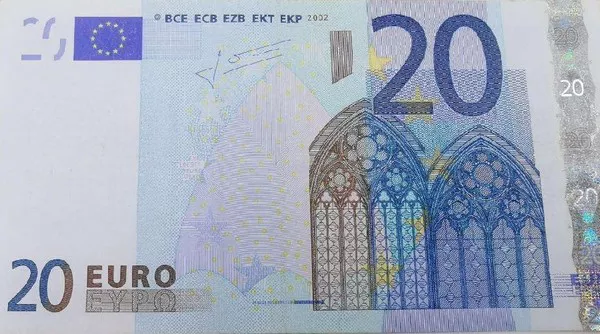In the complex world of foreign exchange (forex) trading, understanding the relationship between different currencies is essential for making informed decisions. One currency pair that frequently draws the attention of both investors and economists is the Swedish krona (SEK) and the euro (EUR). At first glance, it might appear that the Swedish krona is closely linked to the euro given the geographical and economic ties between Sweden and the Eurozone. However, the reality is nuanced. This article explores whether the Swedish krona is tied to the euro, the historical and economic context of their relationship, and what this means for forex traders.
Sweden and the European Union: A Brief Overview
Sweden is a member of the European Union (EU) but notably does not use the euro as its official currency. Instead, Sweden retains the Swedish krona (SEK) as its national currency. This decision is the result of both political and economic considerations. Although Sweden is technically obligated to adopt the euro under the terms of its EU membership, it has postponed doing so by avoiding joining the Exchange Rate Mechanism II (ERM II), a prerequisite for euro adoption.
In 2003, Sweden held a national referendum in which a clear majority voted against joining the eurozone. As a result, the Swedish government has respected the will of the people and has not taken steps to adopt the euro. Despite this, Sweden maintains strong economic ties with the eurozone, leading many to wonder whether the krona operates in practice as a “shadow euro.”
What Does It Mean to Be Tied to the Euro?
When economists or traders discuss a currency being “tied” to another, they usually refer to a fixed or pegged exchange rate system. In such a system, the value of one currency is directly linked to another, often more stable, currency. This peg can be strict, where the central bank commits to a fixed rate, or it can be more flexible, allowing for small fluctuations within a predefined band.
In contrast, a floating exchange rate system allows the currency’s value to fluctuate freely based on supply and demand dynamics in the forex market. Sweden officially operates under a floating exchange rate regime. This means the value of the Swedish krona is determined by market forces without a formal peg to the euro or any other currency.
The Swedish Krona: A Floating Currency
The Riksbank, Sweden’s central bank, uses an inflation-targeting monetary policy and does not peg the krona to any other currency. The primary goal of the Riksbank is to maintain price stability, defined as a 2% inflation rate. To achieve this, it adjusts interest rates and uses other monetary tools to influence economic activity and inflation.
Because of this floating exchange rate regime, the value of the Swedish krona can fluctuate significantly against the euro and other major currencies. These fluctuations are influenced by a variety of factors, including differences in interest rates, inflation expectations, economic growth, and geopolitical events.
Economic and Trade Ties to the Eurozone
Despite its floating currency, Sweden has deep economic ties with the eurozone. The European Union is Sweden’s largest trading partner, with a significant proportion of Swedish exports and imports involving eurozone countries. This close economic relationship means that the krona often moves in tandem with the euro due to synchronized economic cycles and mutual trade dependencies.
For example, if the euro strengthens against the U.S. dollar due to positive economic data from the eurozone, the Swedish krona may also appreciate against the dollar, even in the absence of direct intervention from the Riksbank. This is not because the krona is pegged to the euro, but rather because investor sentiment and economic fundamentals are aligned.
Correlation vs. Causation
Forex traders often observe correlations between currency pairs, but it is crucial to distinguish correlation from causation. A high positive correlation between SEK/EUR and EUR/USD, for example, does not mean that one currency pair is causing the movement of the other. Instead, both may be reacting to similar underlying economic conditions.
Over time, the SEK and EUR have exhibited periods of strong correlation, particularly during times of economic stability. However, during periods of divergence in monetary policy or economic performance, the correlation can weaken. For instance, if the European Central Bank (ECB) and the Riksbank pursue markedly different interest rate paths, the SEK and EUR may decouple.
Market Perception and Speculative Flows
Another factor contributing to the perceived linkage between the krona and the euro is market perception. Many investors and traders treat the Swedish krona as a proxy for the euro due to the economic and geographical proximity. This perception can lead to speculative flows that reinforce the correlation between the two currencies.
For example, in times of eurozone uncertainty, traders may hedge their positions in euros by taking positions in the Swedish krona, expecting similar market behavior. This kind of speculative activity can create a feedback loop that further aligns the krona’s movements with the euro, even though there is no formal peg in place.
Central Bank Interventions and Policy Divergence
The Riksbank and the ECB operate independently and may adopt different monetary policies based on their respective economic conditions. For example, the Riksbank may raise interest rates to combat inflation even if the ECB is lowering rates to stimulate growth. These divergences can cause the krona to move independently from the euro, breaking any perceived tie.
There have also been instances where the Riksbank has intervened in the forex markets to weaken the krona in order to support exports or combat deflation. Such actions further demonstrate the independence of Sweden’s monetary policy and the floating nature of its currency.
Implications for Forex Traders
Understanding the nuanced relationship between the Swedish krona and the euro is vital for forex traders. While the krona is not formally tied to the euro, it often exhibits behavior that suggests a loose, market-driven correlation. Traders should be cautious not to assume a fixed relationship and should consider the broader macroeconomic context when making trading decisions.
Key factors to monitor include:
- Interest rate differentials between the Riksbank and ECB
- Inflation and GDP growth rates in Sweden and the eurozone
- Trade balances and current account data
- Geopolitical developments affecting the EU
- Market sentiment and risk appetite
By staying informed about these factors, traders can better anticipate potential moves in the SEK/EUR exchange rate and adjust their strategies accordingly.
Conclusion
To sum up, the Swedish krona is not tied to the euro in any formal sense. Sweden maintains a floating exchange rate regime and an independent monetary policy. However, due to strong economic ties, geographical proximity, and investor perception, the krona often moves in tandem with the euro. For forex traders, this relationship offers both opportunities and risks. Recognizing the difference between correlation and causation—and understanding the drivers behind each currency’s movement—can lead to more informed and effective trading strategies.
In the end, the Swedish krona remains an independent currency, but one whose fate is frequently influenced by its much larger neighbor, the euro.
Related Topics:


























